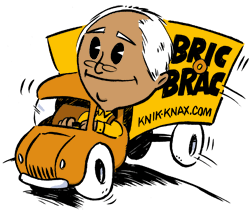 Get out more—develop a social media plan. It’s relatively inexpensive and moves you into a fast developing marketing arena. To get up to speed, check out “Integrating Social Media”.
Get out more—develop a social media plan. It’s relatively inexpensive and moves you into a fast developing marketing arena. To get up to speed, check out “Integrating Social Media”.- Lose weight fast—clean your marketing database. If there were ever an incentive to improve accuracy and reduce excess pounds in your database, this is the year. And don’t forget about your email database, which can really pack on the pounds quickly.
- Reduce stress—get your brand’s assets organized. A study conducted a few years ago asserted that marketers spent approximately 30% of their time finding “stuff” — images, copy, documents, etc. There’s really no excuse with the wide range of asset management tools available.
- Reunite with old friends—spend more time with clients. We all know that the best source of new business is from existing customers, yet most companies continue to devote the largest share of marketing dollars to prospecting. This is the year to break bad habits.
- Quit smoking—smoke your competition instead. Nothing will get you further than developing true competitive differentiation. Commit to breaking free from “me too” products, services and marketing campaigns.
- Improve your finances—increase your marketing ROI. Justify your marketing expenditures with a measurable return on investment. Prove to your company’s executive management team that your marketing campaigns more than pay their own way.
- Help the environment—green your marketing program. Here’s the good news: You’ll likely save money in the process. Be sure to consider the entire marketing supply chain and make key vendors part of your environmental team.
- Serve others—develop a unique and timely product/service. There is opportunity in any market. Now is the time to show your ingenuity with a product or service that’s right for the times. Not launching anything new? Focus on showing how your products/services are clearly the best investment over the longer haul.
- Try something new—launch an innovative campaign. You need to break through the clutter more than ever, especially if you’re products/services fall into the discretionary spending category. Anyone can market through the good times when money is flowing, but next year presents an opportunity for you to separate yourself from the ordinary marketing folks.
- Save money—allocate your marketing budget more strategically. This approach is the opposite of being penny wise and pound foolish, which often happens during lean economic times. Spend more money where you can get the greatest return on your investment (like more dollars for a better booth space or page position) and cut the marginal stuff, even if it’s a personal favorite.
Looking for a Support Group?
Sticking to your marketing resolutions can be a tough, lonely road. MondoVox® Creative Group can provide all the strategic, tactical, creative and moral support you need to turn over a new marketing leaf. For more information, email Julia Moran Martz. Then relax, turn off the digital devices and enjoy a wonderful holiday season.
— by Larry Bauer








